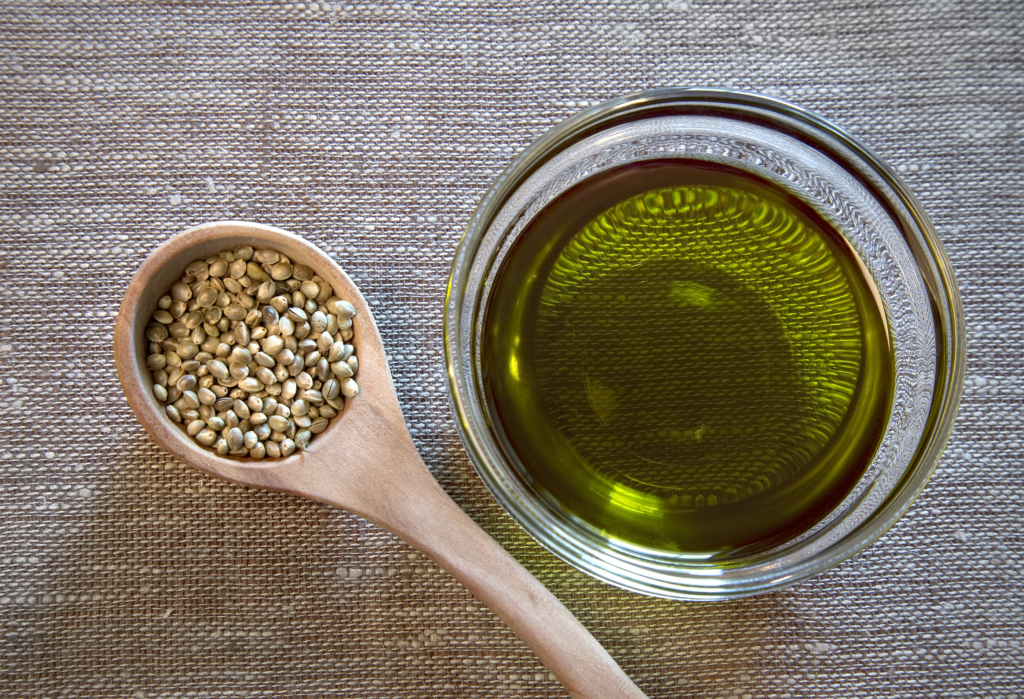The plant has inexhaustible gastronomic potential. Add crunch to vegetables and pep to desserts. Another strong point is that it is grown in France without pesticides.
Would you like some hemp? The proposal is quite honest and more commendable than it seems. Cannabis sativa L, known as industrial or agricultural cannabis, differs from its cousin cannabis in that its THC content is infinitesimal (less than 0.2%) (the molecule responsible for the psychoactive effect), but it has many other advantages, all of which are dispensed legally.
Before hemp was developed for its taste, it already had an impressive number of strings to its bow. Nothing is lost in this fibrous, woody and oleaginous plant, which has been cultivated since Neolithic times. Its fibers are well known for their use in textiles (ropes, cloth, etc.) but also in paper, insulation and plastics. Its wood (known as chenevotte) is used in eco-construction, but also as animal bedding and mulch for horticulture and winegrowing. While its seeds (known as hemp seeds) are used as animal feed (especially for birds) and to produce oil for food and cosmetics.
Hemp seed (chenvis) is rich in vegetable proteins.
If they’re making their way into our kitchens today, it’s because these seeds have taste and character, as well as remarkable nutritional value. Aptly described as a “superfood”, they are rich in plant proteins and have an interesting lipid profile. Another strong point is that agricultural hemp is grown in France without pesticides, whether conventionally or organically. It’s a hardy, resistant plant that doesn’t require chemical treatment,” explains Alexandre Dormoy, who is converting to organic production in Dancevoir (Haute-Marne). It’s a guarantee of quality for the products that come from it (seeds and stems), and one of the reasons why, after a sharp decline in the post-war period, its market is on the up again in France.”
*** Translated with www.DeepL.com/Translator (free version) ***
In organic stores, you’ll have to choose between whole seeds (grey-brown ovoid, halfway between green lentils and kasha buckwheat), hulled seeds (hulled with green particles, similar to white sesame) or oil of a beautiful deep green color (in small dark glass bottles, to avoid oxidation). The rarer hemp flour, brown and gluten-free, comes from the “cake” obtained when the seeds are crushed to make oil. Dairy substitutes and a variety of beverages, including beers with floral and lemony notes, complete the grocery list of the perfect hemp consumer.
Hazelnut flavour in muesli, pie, raw vegetables
Edible hemp can be introduced in small doses, as its herbaceous fragrance is powerful, especially in the oil – which can only be used cold. Mr. Dormoy recommends combining it with rapeseed or sunflower oil in a vinaigrette. “It’s also great for seasoning green vegetables or giving a kick to fried potatoes. With a tablespoon of hemp oil at the end of cooking, they look like new potatoes…” Whole seeds (better roasted) or shelled seeds add crunch and a hint of hazelnut or almond to muesli, granola, tarts, cakes, crumbles, simple crudités or roasted vegetables…
*** Translated with www.DeepL.com/Translator (free version) ***
To convince yourself of hemp’s gastronomic potential, just listen to the enthusiasm it has aroused in two highly talented pastry chefs.
Claire Heitzler recounts how she had to make a hemp macaroon when she was working at Ladurée for American customers who loved “super food”. She “found the experience interesting, both in texture and taste”. “I really liked the product, she says, and then tried to use it differently. » On stage at the Omnivore festival in Paris in March, she presented a citrus and hemp baba, using the latter in three forms: oil in the baba batter, shelled seeds in a pesto, whole seeds infused in a chantilly cream… Beyond that, she confides that she has got into the habit of sprinkling her salads with shelled seeds. She is convinced that “this still little-known product has a bright future ahead of it, as eating habits change: its advantages are undeniable at a time when we are trying to reduce the proportion of animal proteins”.
“I chose to combine it, in the form of a condiment and ice cream, with the acidity of grapefruit and orange, in the dessert offered à la carte.” Jessica Préalpato, pastry chef at Plaza Athénée
For her part, Jessica Préalpato, head pastry chef at Alain Ducasse’s restaurant at the Plaza Athénée in Paris, is particularly interested in the bitterness provided by the little seed, “with a little spiciness on the finish”. “I chose to combine it, in the form of a condiment and ice cream, with the acidity of grapefruit and orange, in the dessert offered à la carte.explains the young chef. But hemp, a bit like buckwheat, goes well with a lot of things: fruit first of all, especially red fruit and citrus fruits, and even chocolate if you choose a variety that’s not too bitter…“. So let’s follow these ladies’ advice and offer a procession of hemp to spring’s little newcomers: the first strawberries and hardy rhubarb, but also timid asparagus, whose shelled seeds will provide a stunning, not to say amazing, coat of breadcrumbs.
*** Translated with www.DeepL.com/Translator (free version) ***
Article originally published on www.lemonde.fr.


